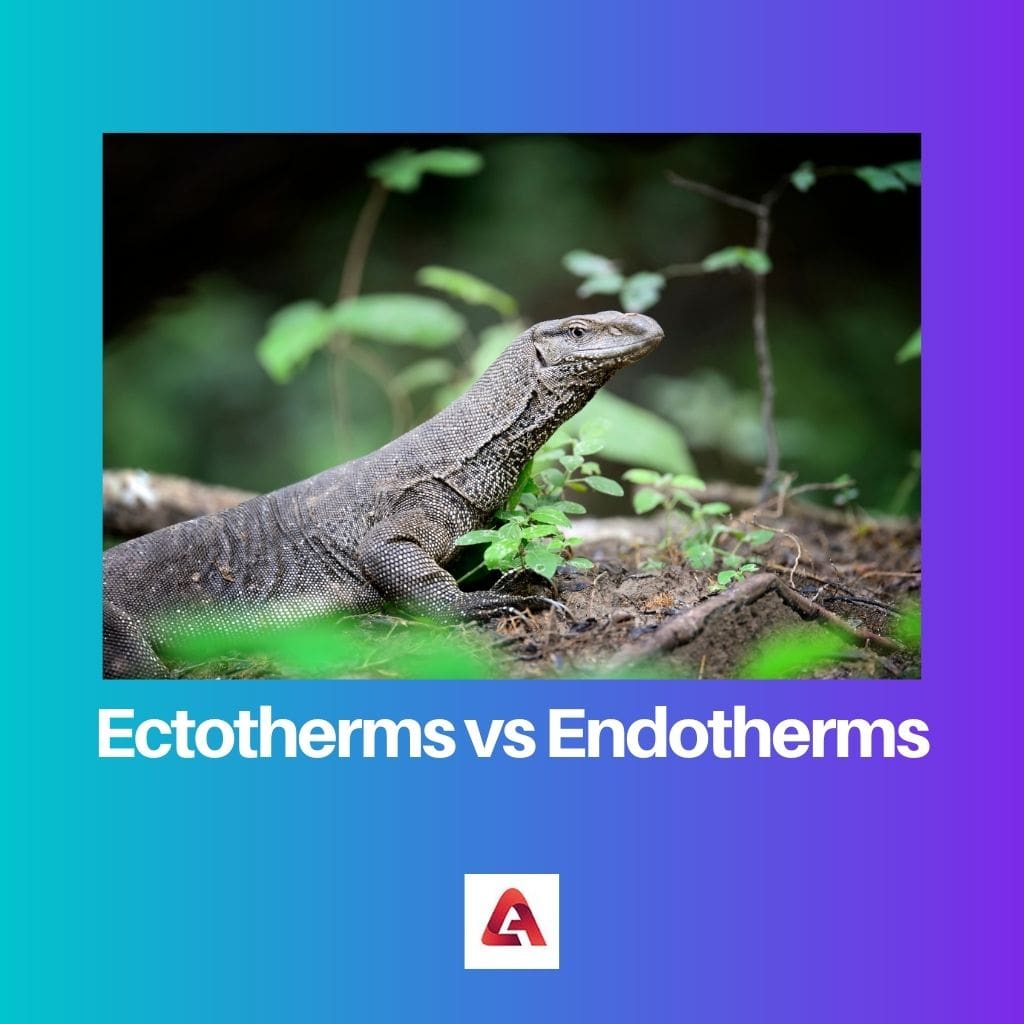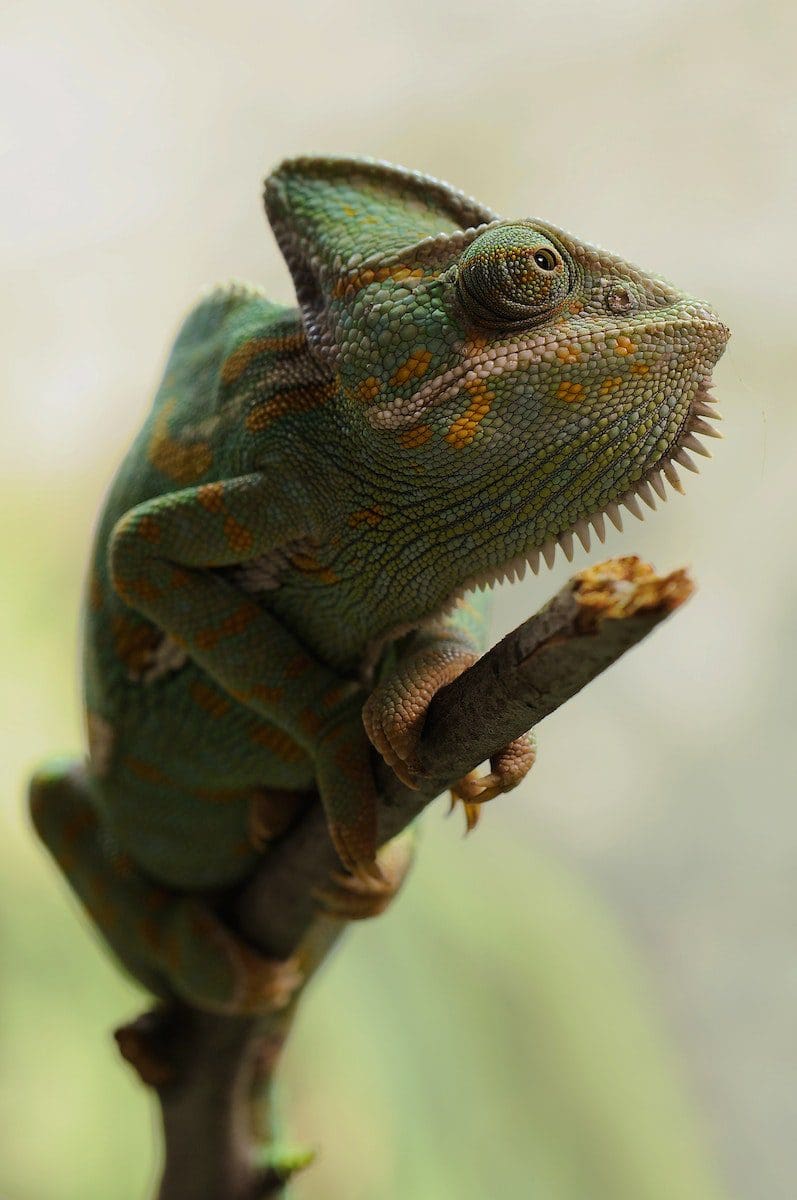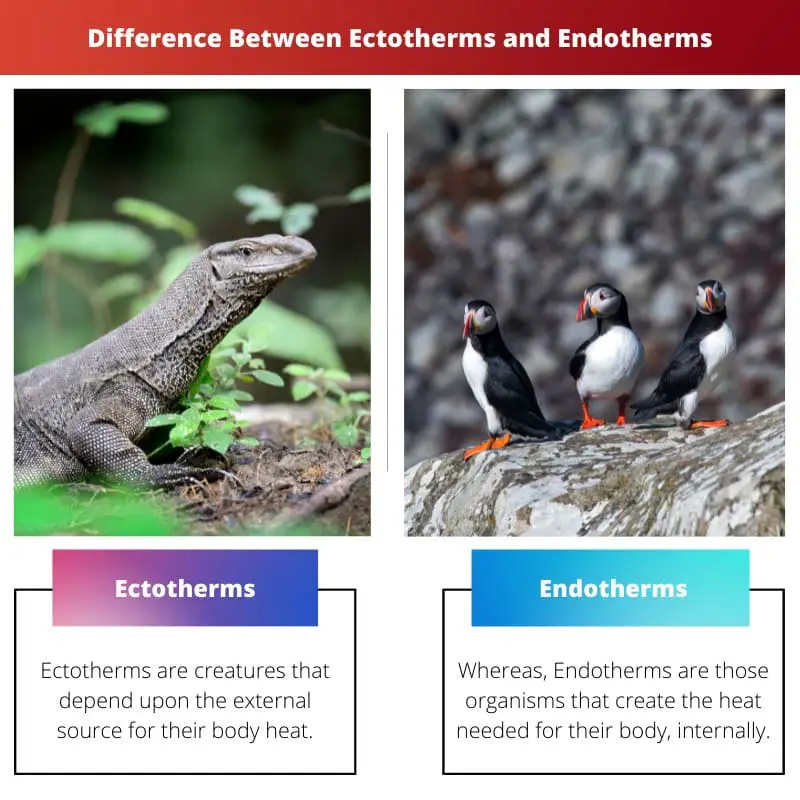A reptile or an amphibian as a pet demands more attention and care than a dog or a cat as its health depends upon the environment, unlike a dog’s or a cat’s health.
This is because they need proper heat, humidity, and diets; as each amphibian or reptile is adaptive to its specialized or specific food, the keeper must be aware of their family history.
Reptiles and Amphibians take their heat from the environment, i.e., their surroundings, for many biological processes, such as food consumption and immunity, to fight diseases.
If their surroundings are not warm enough, they might be unable to fight infections and digest any of their food into their systems.
Key Takeaways
- Ectotherms are animals that regulate their body temperature primarily through external sources, such as the sun. At the same time, endotherms generate and maintain their body heat internally through metabolic processes.
- Ectotherms include many reptiles, amphibians, and fish, whereas endotherms include birds and mammals.
- Ectothermic animals can be more energy-efficient due to their reliance on environmental heat sources. They are also more susceptible to temperature fluctuations; endothermic animals can maintain stable body temperatures in various environments but require more energy.
Ectotherms vs. Endotherms
The difference between Ectotherms and Endotherms is that Ectotherms are organisms (including reptiles and amphibians) that cannot generate heat by themselves, due to which they are dependent upon the environment. On the other hand, Endotherms are organisms that can keep themselves warm without any external assistance.

Comparison Table
| Parameter of Comparison | Ectotherms | Endotherms |
|---|---|---|
| Meaning | Ectotherms are creatures that depend upon external sources for their body heat. | Endotherms are organisms that create the heat needed for their body internally. |
| External temperature | Ectotherms are affected by the external temperature, as it fluctuates with its internal temperature. | On the other hand, an Endotherm’s body temperature does not fluctuate with external temperature. |
| Known as | Ectotherms are known as cold-blooded animals or poikilotherms. | On the other hand, Endotherms are referred to as warm-blooded animals or homeotherms. |
| Stamina and Metabolism | Ectotherms have lower stamina in comparison to Endotherms. Moreover, it has anaerobic metabolism. | On the contrary, Endotherms have more incredible stamina than Ectotherms and have aerobic metabolism. |
| Examples | Snakes, turtles, lizards, and alligators are examples of ectotherms. | Whereas, Mammals, humans, polar bears, penguins, etc. |
What are Ectotherms?
Ectotherms are organisms with a minor or low level of internal heat generation. Therefore, they absorb heat from external sources, i.e., their surroundings. Some ectotherms live in an environment where the temperature is constant.
In places where the temperature varies, the animals bask in the sun to in-take the heat and perform activities. Sometimes, they limit their physiological activities to preserve their energy.
The fluctuating temperature affects the body temperature of Ectotherms as well; such variation is known as Poikilothermy, which gives out another name for Ectotherms, which Poikilotherms.
There are distinct body patterns of ectotherms; for example, reptiles and many insects adopt positions in a way that they get maximum sun exposure or seek shelter.
In addition to body patterns, or behavioral changes, there are physiological changes that help Ectotherms regulate their body temperatures.
During winters or cooler temperatures, some Ectotherms enter into hibernation, or a state of inactivity, which may last for a day or a year, depending upon the species. Hence, they restrict their movement, and some might not be able to live through the season as their metabolism rate and body temperature, decreases, and in some animals like wood frogs, their metabolism stops.
Hibernation helps such animals survive, allowing them to live without food for a long time.

What are Endotherms?
In Greek, Endon means internal, and as the name suggests, Endotherms are the organisms that regulate their body temperature internally.
They maintain their body temperatures at a favorable temperature for their metabolism. The internal heat is a result of the animal’s normal metabolism.
Unlike Ectotherms, Endotherms are unaffected by external temperature, i.e., the location does not affect their body temperature; they sustain their core temperatures to keep their metabolism working.
Endotherms are active day and night, unlike Ectotherms, who become sluggish at night and come out of their shelters in the morning to absorb the heat from the sun.
The metabolism rate increases with the increase in the external temperature, and hence they require more food in warmer temperatures. To avoid the problem of overheating, the animals lose body heat by “panting,” which cools off the animal’s body.
Whereas hairless, as well as short-haired mammals, for example, humans “sweat” to lose the heat, as the heat is evaporated through sweat. Elephants use their large ears to increase airflow, which reduces their core temperature.

Main Differences Between Ectotherms and Endotherms
- Ectothermic animals gain heat from the external source, while, on the other hand, endothermic animals absorb heat from their metabolism.
- Ectothermic organisms have a body temperature the same as their environment; on the other hand, Endothermic organisms regulate their body temperature as per the surroundings.
- The food intake of Ectothermic organisms is less as compared to Endothermic organisms.
- Ectothermic animals tend to become sluggish due to the need for hibernation, while on the other hand, Endothermic animals can inhabit cooler temperatures.
- Ectothermic animals require less food; on the contrary, endothermic animals require more food in warmer temperatures as their metabolic rate increases with temperature.

- https://link.springer.com/article/10.1007/BF00175505
- https://www.physiology.org/doi/abs/10.1152/ajpregu.1996.271.5.R1287

The level of detail in this article is impressive. It provides a comprehensive understanding of the topic.
Definitely, the biological and behavioral aspects of ectotherms and endotherms are thoroughly covered.
I appreciate the clarity and precision in outlining the differences between ectotherms and endotherms. The article is elucidating.
Absolutely, the distinction between these physiological mechanisms is expertly presented.
While it’s important to understand the differences between these creatures, I can’t help but feel a bit overwhelmed by the information presented here.
It’s definitely a lot to take in, but the complexity of these organisms is truly remarkable.
I understand where you’re coming from, the content is quite dense and can be challenging to absorb.
It is truly fascinating to learn about the different ways reptiles and amphibians regulate their body temperature. It makes them such unique creatures!
Absolutely, the distinction between ectotherms and endotherms is quite intriguing.
This article provides an in-depth exploration of ectotherms and endotherms, shedding light on the remarkable adaptations of these creatures.
Indeed, the evolutionary and physiological aspects of these animals are truly captivating.
I never knew about the differences between ectotherms and endotherms before. This article has been quite enlightening.
Agreed, it’s always intriguing to learn about the diversity of living organisms.
The biological intricacies of ectotherms and endotherms are quite astounding. This article offers a comprehensive analysis of these fascinating creatures.
The sheer diversity and complexity of life forms on our planet never cease to amaze.
Indeed, the adaptive strategies and physiological processes of these creatures are truly remarkable.
The comparison between ectotherms and endotherms is thought-provoking. Nature’s mechanisms are truly captivating.
Indeed, the biological adaptations and behaviors of these organisms offer profound insights into the complexity of life.
Learning about the physiology and behavior of ectotherms and endotherms has been eye-opening. The intricacies of nature are awe-inspiring.
Absolutely, it’s fascinating to delve into the science behind these organisms.
The information provided in this article is incredibly informative. It’s a testament to the intricacy of life on Earth.
Absolutely, the symbiotic relationship between organisms and their environments is truly fascinating.